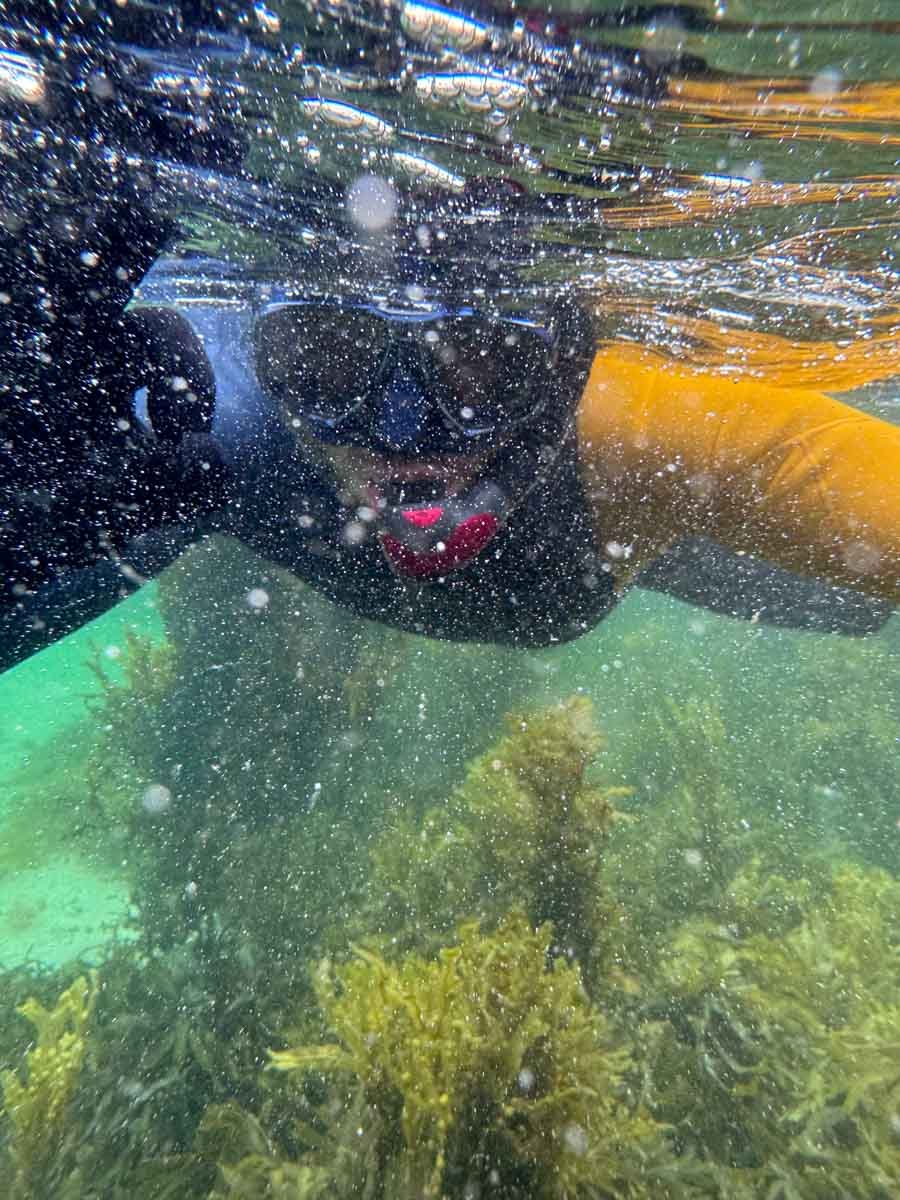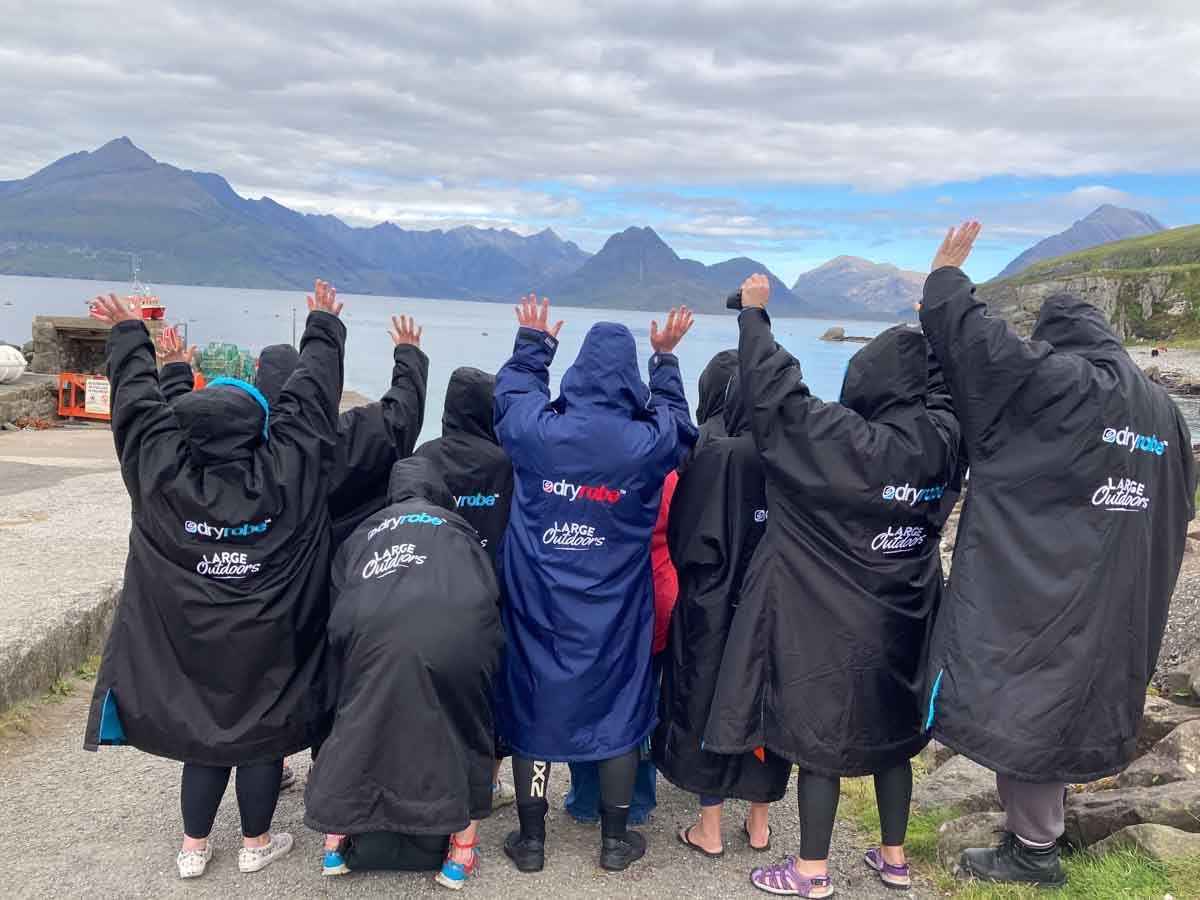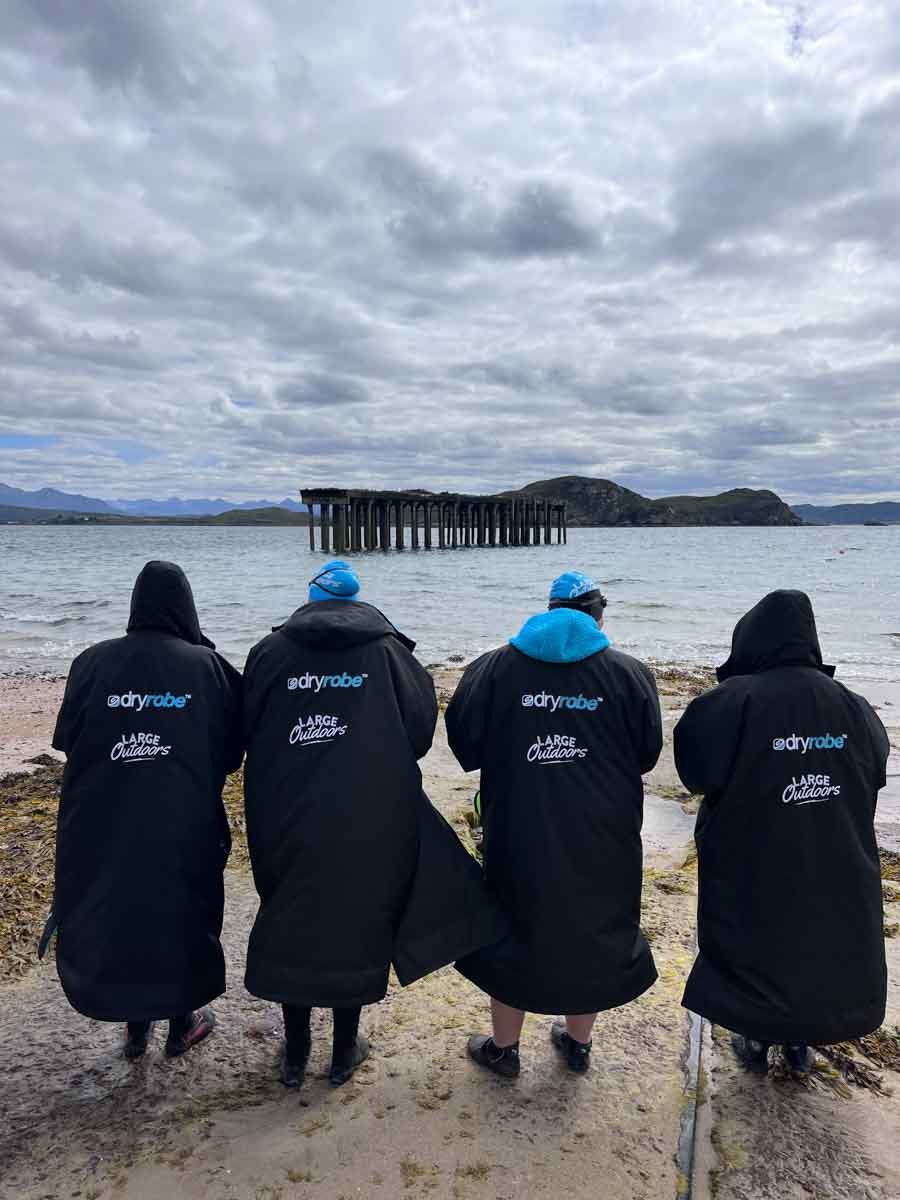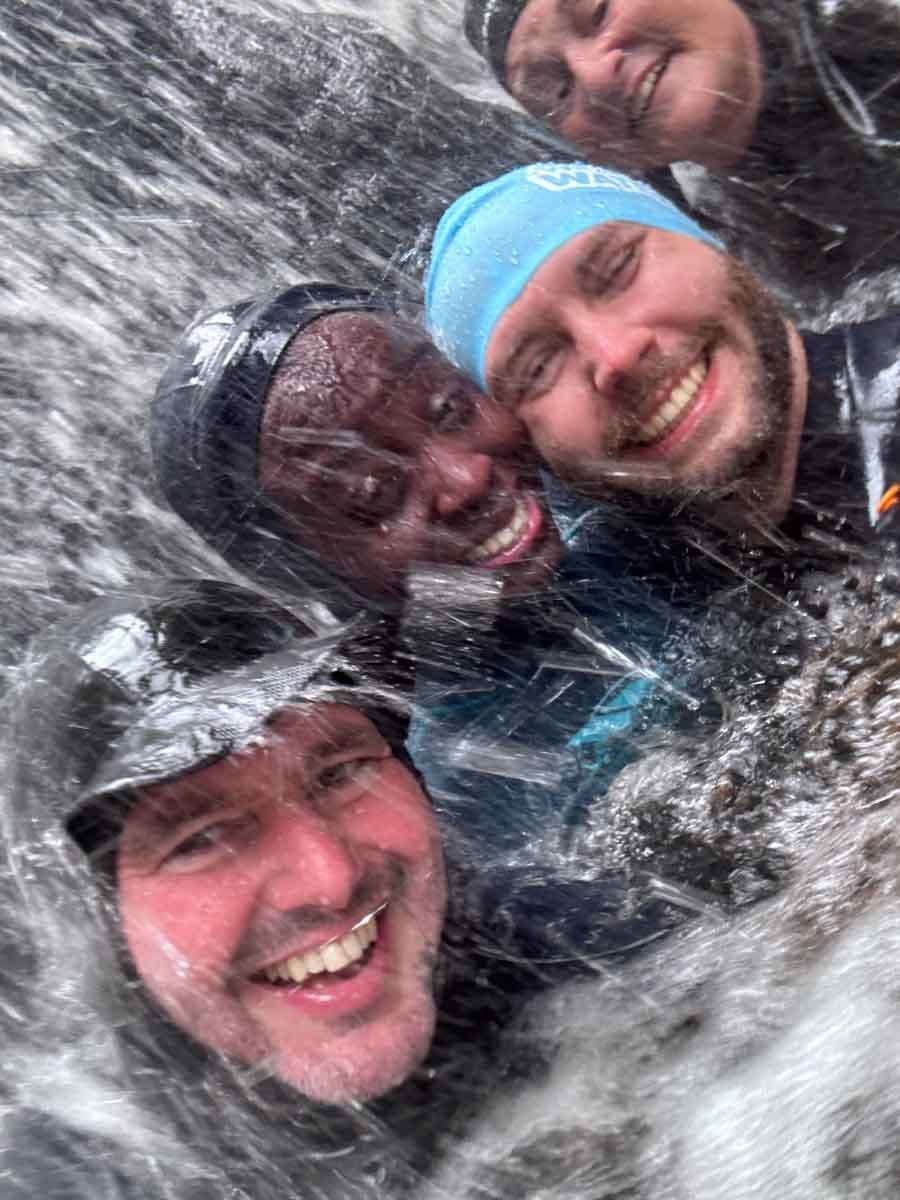




Essential Wild Swimming Kit List for Large Outdoors
This Kit List applies to all Large Outdoors experiences that involve wild swimming, whether you’re a beginner or seasoned outdoor swimmer.
This list covers everything you’ll need for a Large Outdoors wild swimming experience – whether you're a first-timer or a seasoned outdoor swimmer.
Our trips often include multiple dips a day in varied locations, so staying warm, safe, and comfortable is key. Some items are essential, and your guide will make the final call on whether you’re adequately prepared to take part.
If you have any questions about kit or whether this trip is right for you, just get in touch – we’re happy to help.
Essential Items – You’ll need all of these to take part safely:
Swimsuit or swimming trunks
Your under-wetsuit layer. Some people bring a rash vest or thermal base layer for added warmth and comfort.
Wetsuit
Wearing a wetsuit is essential for staying warm throughout the day. Without one, most people get too cold after the first swim or two and end up sitting out.
You can read more about why we strongly recommend a wetsuit here:
https://www.largeoutdoors.com/walking-news-blogs-galleries/why-wear-a-wetsuit-wild-swimming
And here’s advice on choosing the right type:
https://www.largeoutdoors.com/walking-news-blogs-galleries/what-wetsuit-should-i-use-wild-swimming
Footwear for entering the water
You must have sturdy footwear for getting in and out of the water. We don’t allow thin water shoes or bare feet. Old trainers with a solid sole or wetsuit boots are ideal.
See our review of suitable boots here:
https://www.largeoutdoors.com/walking-news-blogs-galleries/review-of-fourth-element-amphibian-boots-ideal-for-wild-swimming-adventures
Tow float
We supply these on most trips, but feel free to bring your own if you have one. They help with visibility and offer support in the water.
Swim cap
We’ll provide brightly coloured swim caps so guides can see everyone clearly. You’re welcome to bring your own, but it must be visible in the water.
Knife (for emergency use)
A small penknife or folding safety knife should be in your bag. While rarely needed, it’s an important safety precaution in case of tangled tow floats or debris.
Why we ask you to carry one:
https://www.largeoutdoors.com/walking-news-blogs-galleries/why-i-always-carry-a-knife-when-wild-swimming
Mobile phone
Keep your phone charged and stored in a dry bag. It’s essential for communication if you need to leave the group or in case of emergency.
Strongly Recommended – These items aren’t essential, but they’ll make a big difference:
Neoprene gloves
Useful for colder swims or early/late season trips to help keep your hands warm and functional.
Neoprene hood or swim hat
Great for heat retention and especially useful in chillier waters.
Goggles
Optional, but handy if you prefer to keep water out of your eyes or enjoy seeing what’s beneath the surface. On longer swimming holidays, we often bring snorkels too.
Dry robe or changing robe
Very effective for staying warm between swims or at the end of the day. Check your event page – we provide these on some trips.
Ear plugs
If you’re prone to swimmer’s ear or find water in the ears uncomfortable, ear plugs are worth packing.
Flask with a hot drink
A warm cuppa after a swim makes a big difference, particularly if the weather’s cool or breezy.
Waterproof camera
We often bring a GoPro, but if you'd like your own footage, bring a waterproof camera. We don’t recommend using mobile phones even in waterproof cases.
Midge spray
A must on Scottish trips. Conditions vary, but it’s better to have it than not.
Waterproof sunscreen
Even on cloudy days, you can get sunburnt when swimming – water reflects UV rays.
For the Shore – Staying warm and organised between swims:
Rucksack or suitable day bag
All kit should be stored in your own backpack to help keep things organised in the vehicle and on the move.
Towel (consider bringing two)
One for drying off after each swim, and a fresh one for post-shower if you’re staying overnight.
Warm layers
Bring a hoody, fleece, or insulated jacket you can wear over your wetsuit between swims. After the final swim of the day, changing into dry, comfortable clothes makes all the difference.
Dry shoes and socks
You’ll need a separate pair of walking shoes or trainers for when you’re not swimming.
Hat, buff, and gloves
Especially for spring or autumn trips, keeping your head and hands warm before and after swims is important.
Packed lunch, snacks, and water
Most trips require you to bring your own lunch. Check your event page under "What’s Included." Bring snacks and around 1.5L of water – there’s usually an opportunity to refill.
Personal first aid and medication
Bring anything specific to your needs – all our guides carry a group first aid kit and are first-aid trained.
Head torch (plus spare batteries)
A head torch is a year-round essential – even in summer. Don’t rely on your mobile phone.
More info: https://www.largeoutdoors.com/walking-news-blogs-galleries/why-you-need-a-head-torch-on-a-large-outdoors-trip
Final Thoughts
This list is designed to help you get the most out of your trip – from staying warm and safe to enjoying every swim. Most of our swimmers who try to go without a wetsuit find they end up missing out.
Please take a few minutes to read:
https://www.largeoutdoors.com/walking-news-blogs-galleries/why-wear-a-wetsuit-wild-swimming
Still unsure about anything? We're happy to answer questions before your trip.
